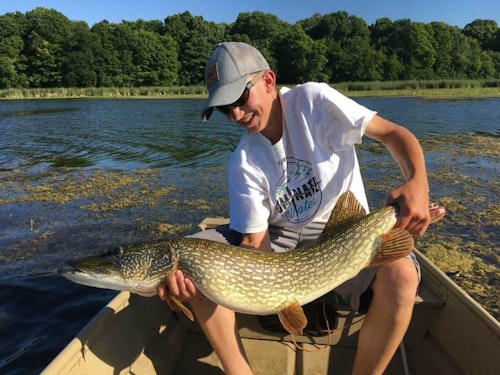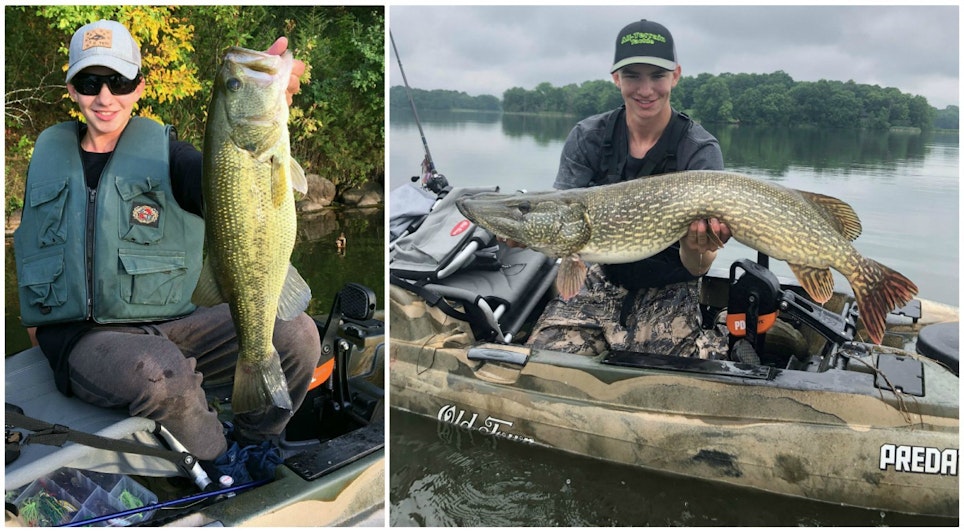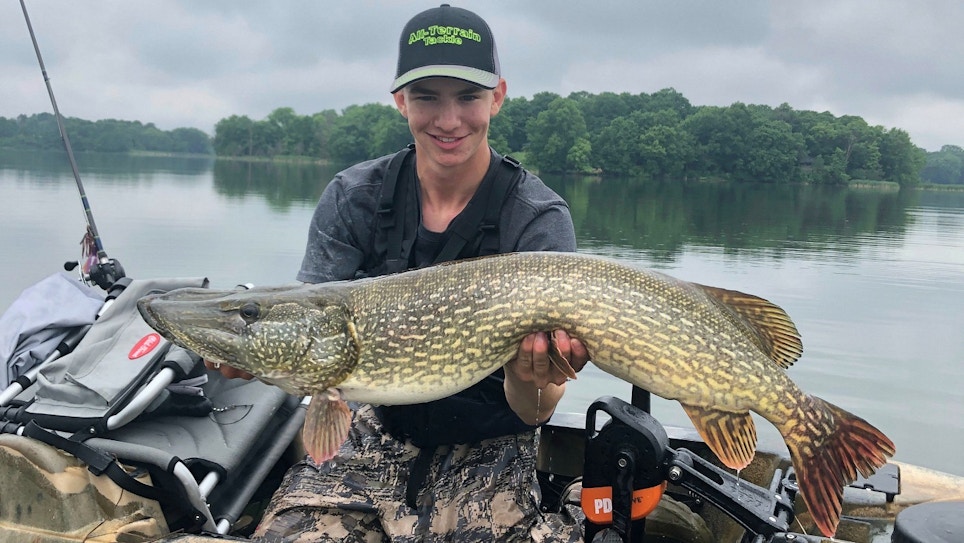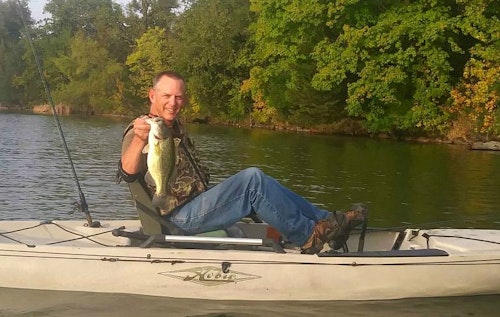Not many graduating high schoolers choose a college based largely on the quality of bass fishing on campus, but I did. And when I moved in as a nervous freshman, the most comforting possession I brought from home was my 12-foot jon boat. With permission to leave the small flat-bottomed boat chained to a tree on the shoreline of the school’s 200-acre lake, I spent many mornings and afternoons rowing through lily pad bays and cabbage flats in search of hungry largemouth bass and northern pike.

It’s been nearly 40 years since I purchased my jon boat, and while it still works well, I’ve added another small watercraft to my fishing arsenal that does so much more. Below are the top four reasons I own a kayak and why I love fishing from it.
1. Reasonable Price
Fact: Big boats cost big bucks. And large outboards require regular maintenance, and drink a lot of gas, too. In contrast, kayaks prices begin at a few hundred dollars. And because you’ll power a kayak with either your arms or legs, you won’t be paying at the pump.
Keep in mind that a fully rigged, fishing-specific kayak that features leg-powered propulsion (more on this in a moment) can cost a few thousand dollars.

2. Underfished Waters
The campus lake I mentioned earlier doesn’t have an access for trailered boats, which is why my jon boat was a smart solution. The same is true for kayaks. Of course, lakes with limited access mean fish receive less pressure, so if you sometimes curse the fact your favorite honey-holes on larger lakes are occupied by other anglers, then it’s time to consider a kayak.
Important note: There are several cart systems available to help anglers move kayaks across dry land. The Paddleboy ATC (all-terrain cart) from Seattle Sports is my choice. I’ve even used my mountain bike to tow my kayak with this handy cart.
3. Hands-Free Fishing
Fishing from my jon boat is wonderful when I’m able to power it with an electric trolling motor, but it’s a bit of hassle when I have to row. I’m not afraid of hard work, and I enjoy rowing from point A to point B, but I don’t like having to put down my fishing rod to row a few strokes to slip down the shoreline before casting again.
I’ve spent a good amount of time fishing from low-priced paddle kayaks, and while they work well, these models don’t eliminate the boat control problem. Instead of rowing a jon boat with oars, you must readjust kayak position with a paddle.
For this reason, I much prefer the benefits of kayaks propelled by leg power. Specifically, I have experience with a 13-foot 8-inch Hobie Mirage Pro Angler 14 and an Old Town Predator PDL, which measures 13 feet 2 inches. Yes, these models cost considerably more than paddle-only kayaks, but they are still much less expensive than buying a boat/motor/trailer package of almost any variety.
With Hobie’s original MirageDrive, you push pedals forward and backward in a straight line, which causes underwater fins to move the kayak forward. The more expensive MirageDrive 180 system, which is found on the Pro Angler 14, enables anglers to also move the kayak backward, but you must first pull a shift cable before pushing and pulling the pedals. Top-of-the-line fishing kayaks from Hobie feature MirageDrive 360, which enables anglers to move the kayak forward, backward, or even in a tight circle.
With Old Town’s PDL (pedal) Drive, you pedal in a circular motion, like on a bike. When you pedal forward, the underwater propeller moves the kayak forward; when you pedal in reverse, the kayak moves backward. The advantage to this system over the MirageDrive 180 is you can immediately move backward without having to take your hands off a fishing rod. For casting along weedlines and docks, when precise kayak control is a must, PDL Drive is a gamechanger.
When using both the Hobie and Old Town leg-powered propulsion systems, a rear rudder is controlled with a handy knob to steer the kayak.
One final note on why I prefer a kayak over my jon boat in many instances: Even when I power my jon boat with a 40-pound-thrust electric trolling motor, I can travel across a lake much faster in a kayak to reach my fishing destination. And the speed difference is even more noticeable when traveling into a headwind of 10 mph or more. Leg-powered kayaks cut through the water and the wind. My Predator PDL kayak is at least twice as fast as my jon boat, perhaps three or even four times faster in difficult windy conditions. In the kayak, I’m also getting a bit of exercise, too, which is always good.

4. No Trailer Needed
I slide my kayak into the bed of my pickup and install a truck bed extender into my hitch for added support. The measurement of my pickup bed plus tailgate in the down position is 7 feet 8 inches, and my Predator PDL is 13 feet 2 inches. I’ve hauled the Predator without the bed extender installed, but it’s dicey. One ratchet strap threaded through the two kayak handles keeps the watercraft secure during truck transport.
If you live in an area with lakes featuring carry-in-only accesses, then consider buying a kayak. Aggressive fish that don’t often see lures are ready to strike, and all it takes is a bit of effort on your part to get to them. And the best part is you’ll probably have the lake all to yourself.









